I love lots of plants people call weeds (see my book) but there are some plants that can be problematic in gardens and worth removing, such as ground elder, Aegopodium podagraria. Ground elder is a beautiful plant, with attractive green leaves and white umbels of flower that look like short cow parsley in early summer. In our new garden we have a 4m x 5m patch of ground elder which some might see as a bad thing, but I’m over-the-moon as I can now test and demonstrate what organic methods work to remove it (or not!)
The problem with ground elder
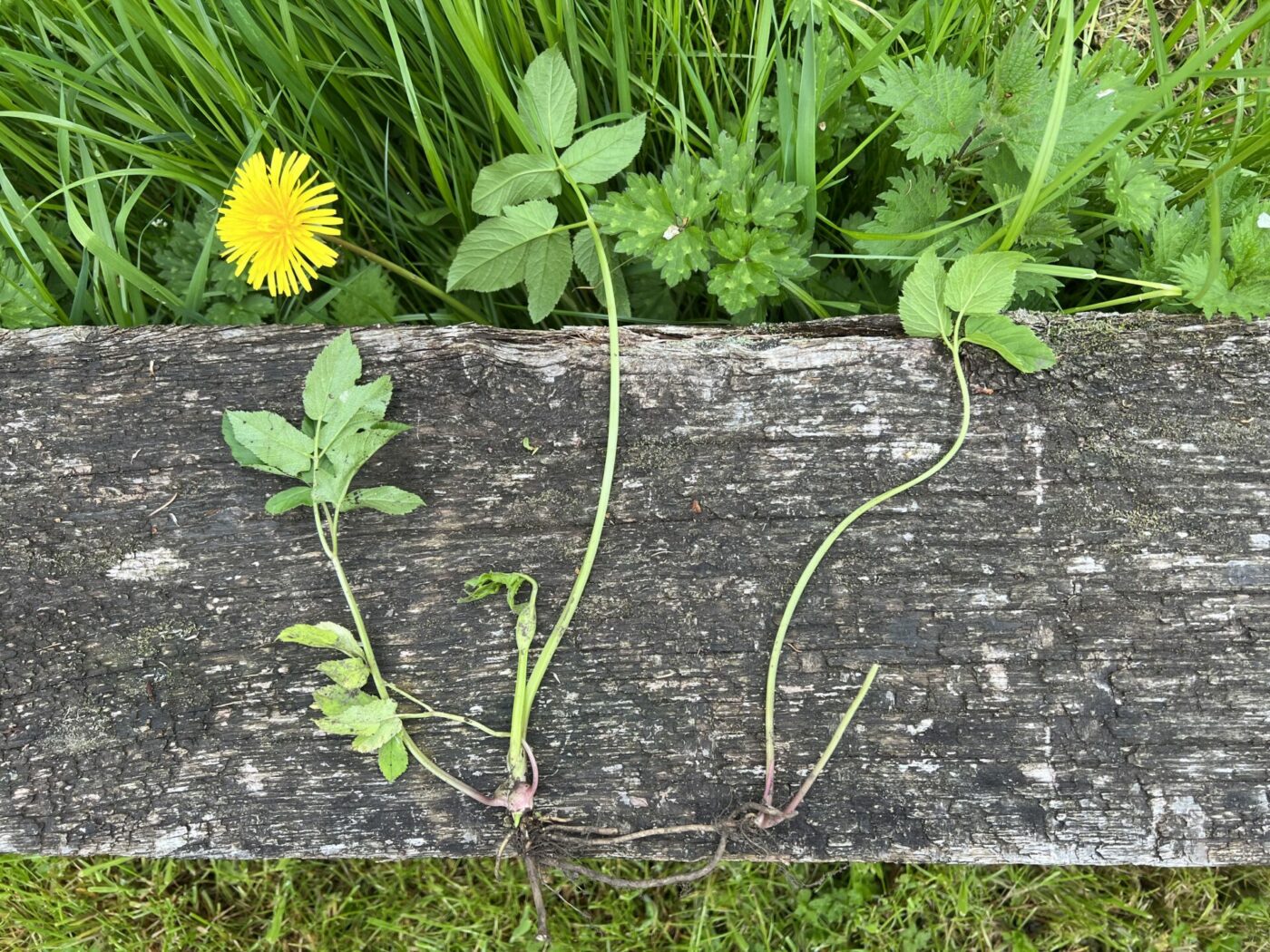
Unfortunately, ground elder spreads by underground rhizomes, horizontal roots with shoots, that spring up creating a dense mat that blocks out many plants of the same size. Eventually it will kill other perennials by taking light, water and nutrient, creating a monoculture of less value for wildlife and less interesting for us. It is a vigorous grower that will shoot from the tiniest bit of root and spreads rapidly.
Join my weekly newsletter for organic gardening tips
It grows between the roots of other plants making it hard to remove from between them. All in all, this is not a plant I would recommend in your garden, or the main bit of garden if you have a larger plot. If you love ground elder to bits, by all means grow it of course.
How I am tackling ground elder organically
| Technique | Result | Winner |
| Cover with cardboard and 5cm compost mulch | It did stop the plant growing through while the cardboard lasted. Cardboard and mulch is a technique only meant for use on annual unwanted seedlings however and as expected, it did not weaken the plant and as soon as the card decomposed by the following spring, the ground elder bounced back unscathed. | Ground elder 1, Jack 0 |
| Mowing through lawn | Where ground elder is growing in our lawn, mowing it weakened and killed patches of it over time. On the edge of the planting area containing the ground elder it did keep growing back into the lawn, but only made it about 30cm and never further in than this with regular mowing. Covering an area with lawn until it’s gone completely should work, after a number of years. | Ground elder 1 Jack 1 |
| Eat it | Lots of people have suggested eating ground elder into oblivion. I have tried eating its tender new shoots, it tastes quite nice as a salad crop. However anyone who’s tried dealing with ground elder will know, you’d have to be sat on the patch eating only ground elder for a number of years before your picking and munching truly made any kind of impact. | Ground elder 2, Jack 1 |
| Digging out | One sure fire way of getting rid of a plant in a patch of soil is to dig it out with all of its roots. Unfortunately, like bindweed and couch grass, ground elder roots are brittle, snapping easily. The plant can also grow from tiny bits of roots you can’t see with your eyes. However, the good news is that with some careful handling you can grip a piece of root in one hand and then with a hand fork in the other, trace it back getting rid of as much root as possible. In areas where I’ve done this, the plant is noticeably fewer in number with lower vigour when it grows back. With repeated digging out across each year, over a number of years, eventually it should all be gone. The challenge will be under existing shrubs, the hedge and a wall it grows under where its roots can hide, but I’m hoping to at least dig it back to these areas! | In progress |
| Loosen the soil | By digging out the ground elder I’m actually creating loose soil that makes it easier for the plant to grow in. Which sounds counterintuitive except loose soil also makes it easier to remove its brittle roots in future digging out sessions. In addition I have been recommended to cover areas with a thick layer of compost to encourage the plant to grow higher in this loose material to again make it easier to dig out. So I’m going to do both. | In progress |
| Tagetes minuta | Mexican marigold (an annual), Tagetes minuta, is said to kill ground elder using chemicals produced by its roots. This is called allelopathy and while it might sound too good to be true, it’s a genuine thing in plants, where some plants will release chemicals to suppress the growth of other plants. However, in my trial of Mexican marigold it had no impact whatsoever on the ground elder. I was skeptical this would work in one season anyway and I am happy to tell you that in my experience, the idea of Mexican marigold killing ground elder is a complete myth we can put to bed and forget. | Ground elder 3, Jack 1 |
| Suppressant matting | I’m going to cover some areas with suppressant matting to starve the plant of light. This will be like the cardboard but the matting won’t decompose, allowing it to stay put for a number of years hopefully killing the plant eventually. I have to admit I’ve tried this with couch grass and nettles and even after two years, the plants were alive and well! However, their roots were directly on the surface of the soil under the matting making it much easier to dig them out later and eliminate them. | In progress |
| Out compete it | One thing I know I can do quite easily is plant up the area with a number of plants that will outcompete and eventually kill the ground elder over the years with a slow decline in light, moisture and nutrients. Generally anything larger than the ground elder, that completely covers it. I’m not at this point because I want to see if the above methods can remove it to allow smaller plants back in. | not trying yet |
Update: 5 May 2022
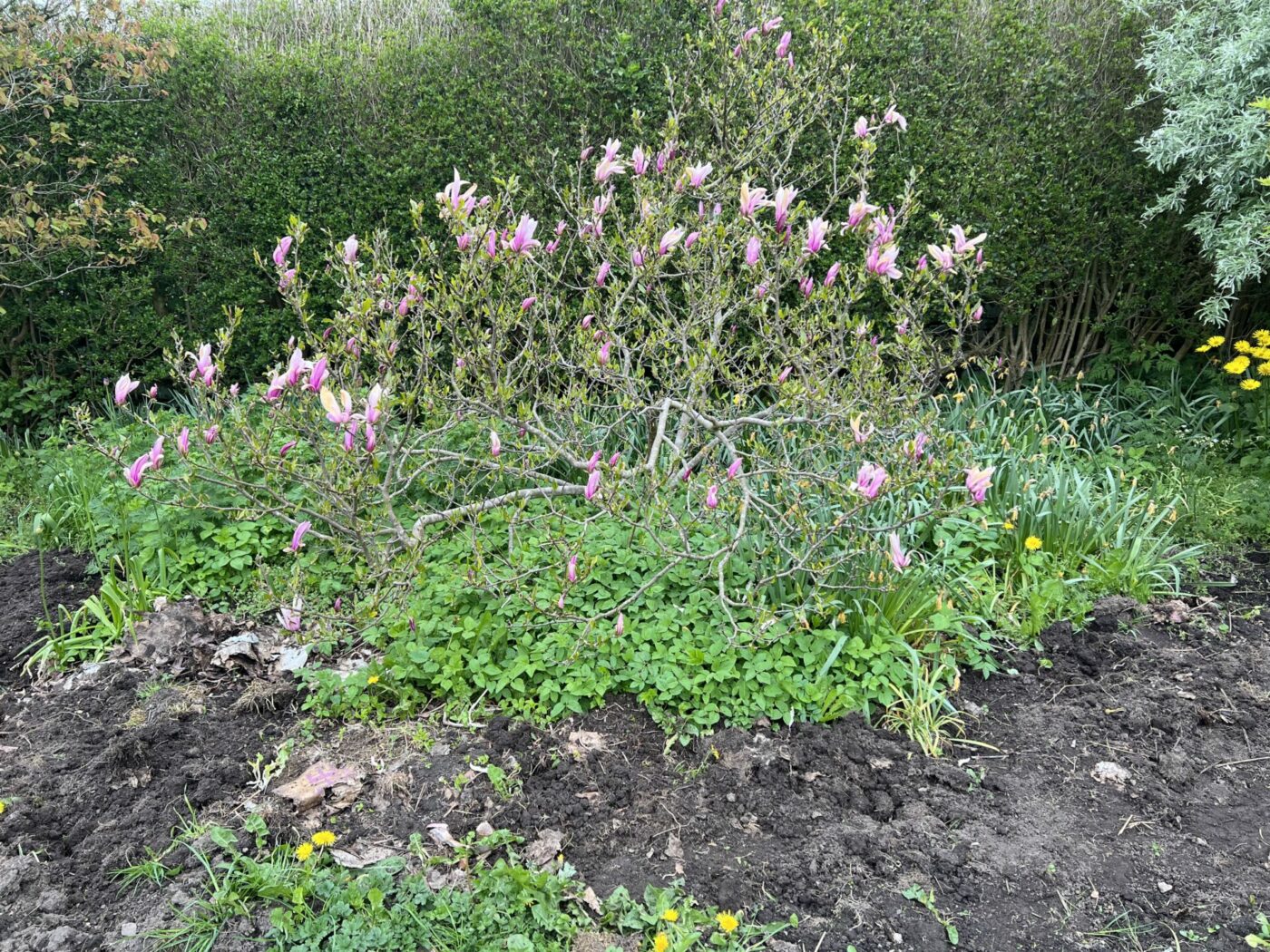
Above you can see our main patch of ground elder which sits largely beneath a shrub Magnolia and then runs under the hedge behind and under a dry stone wall behind that. I’ve begun by digging a metre around the outside of the patch, so I’ve already removed about 7 – 8 metres of roots in my first sweep of digging. It’s growing back but in lower quantities I can continue to dig. The challenge is how to get at it beneath the Magnolia and the hedge. Stay tuned.
Update: 16 September 2022
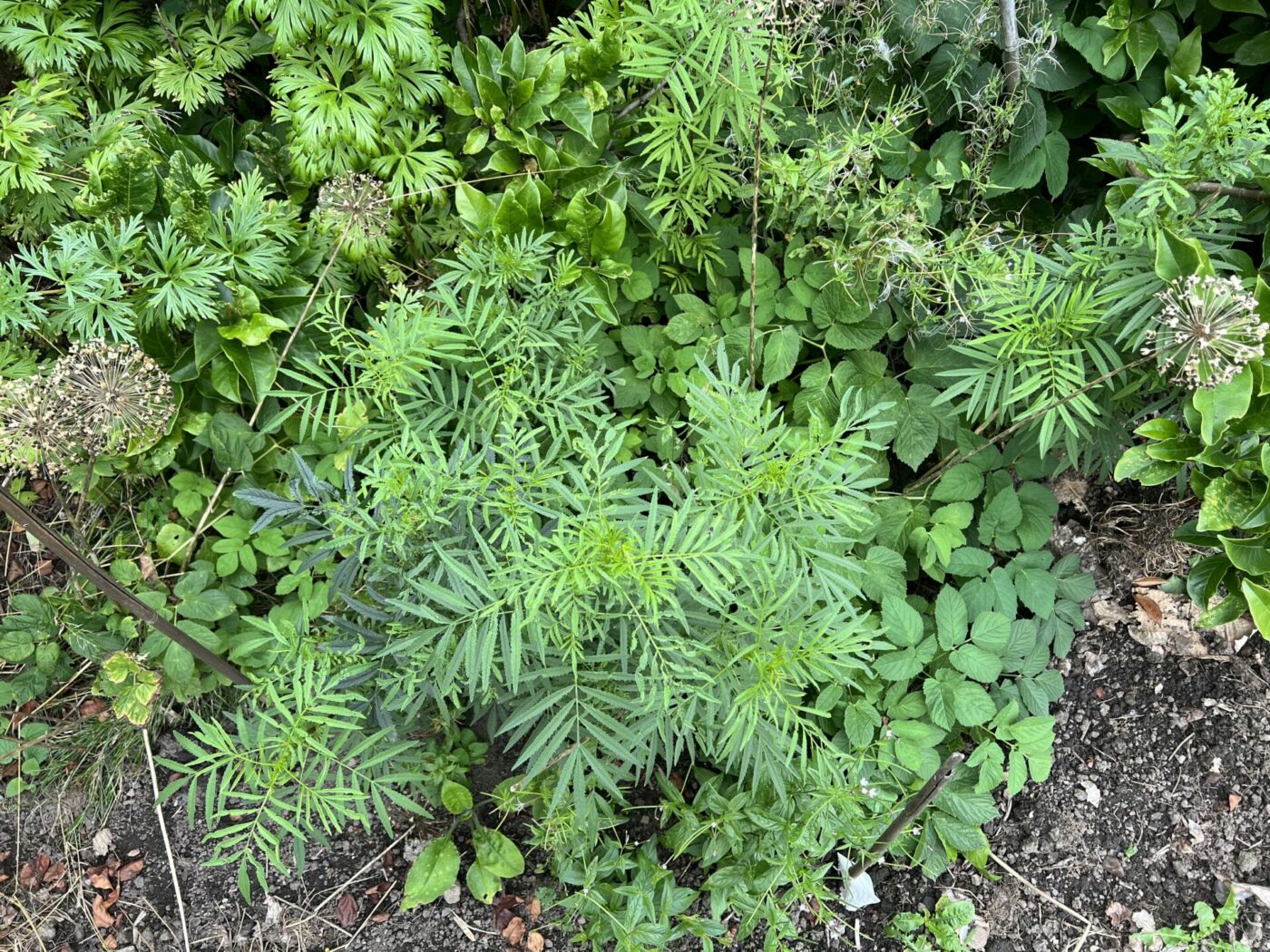
The size of the patch hasn’t seemed to really expand through summer, above ground at least! Hoeing off new shoots around the patch has so far appeared to work to contain it. The Tagetes minuta (Mexican marigold) has had no impact whatsoever. During very dry patches of summer the ground elder noticeably wilted before any other plant, suggesting it will struggle and potentially become less of a pain in future years. But watch out for other plants taking its place that love the drier conditions!
Update: 27 March 2023
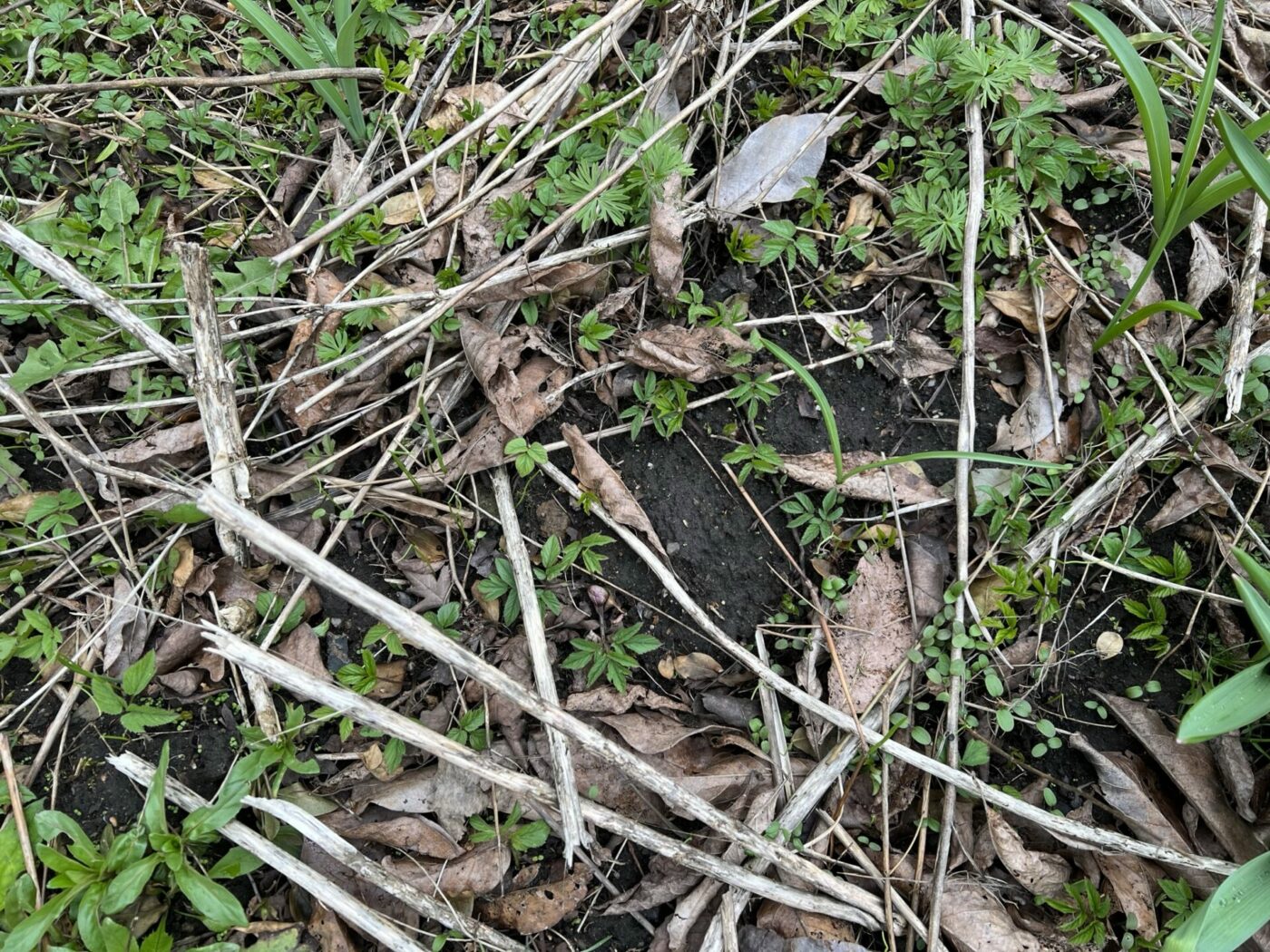
In the test patch of Tagetes minuta, shown in the photo above, the ground elder leaves is clearly seen coming back on mass as we enter spring the next year. If I were being generous I would say there is perhaps slightly less than the rest of the patch but there is still a lot. I would normally always like to try something at least twice before writing it off, but for now I think I will park Mexican marigold as a means of getting rid of ground elder unless someone can convince me otherwise. I am going to try other plants instead.
Update: 30 May 2023
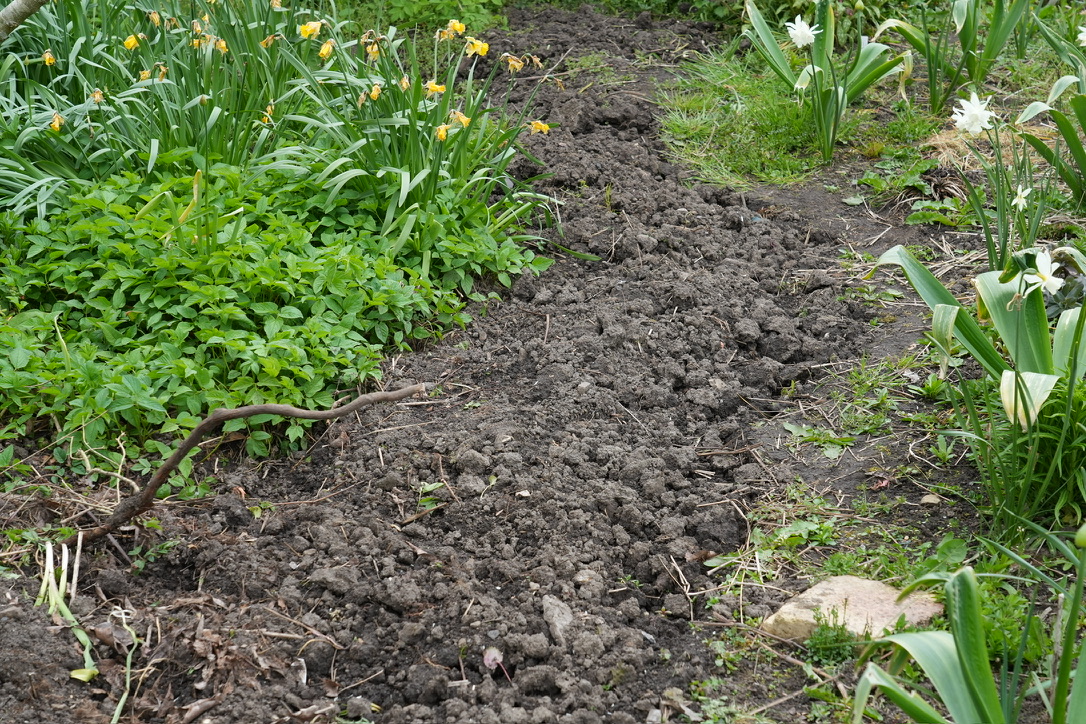
I’ve removed a couple of existing shrubs in the middle of the ground elder patch (and I suspect the source of the ground elder originally) giving me better access to the soil. This has made it incredibly easy to start from the outside of the ground elder patch and work back toward the hedge and wall behind it. I’m going to replace the old shrubs with new shrubs that have increased wildlife benefit once the area is clear. I doubt I’ll ever remove it completely from under the hedge and wall so my aim is to get it back to there, create an informal narrow path along the hedge for better access to cut the hedge that I can also use to patrol to keep the ground elder contained in the one spot, keeping the main border clear and ready to continue my wildlife planting. Once dug over, the ground is very loose and easy to then dig again, making repeated sweeps of ground elder as it emerges easier and easier. So far, this plan of digging and loosened soil is working well, though it is a lot of effort initially, especially removing large established shrubs. Note, normally I try to minimised digging as much as possible to not disturb soil life, however to get roots of problem plants out, this is the only way. I see the short term soil damage in this small spot is warranted by the long term gain of removing the diversity suppressing ground elder.
Update: 25 July 2023
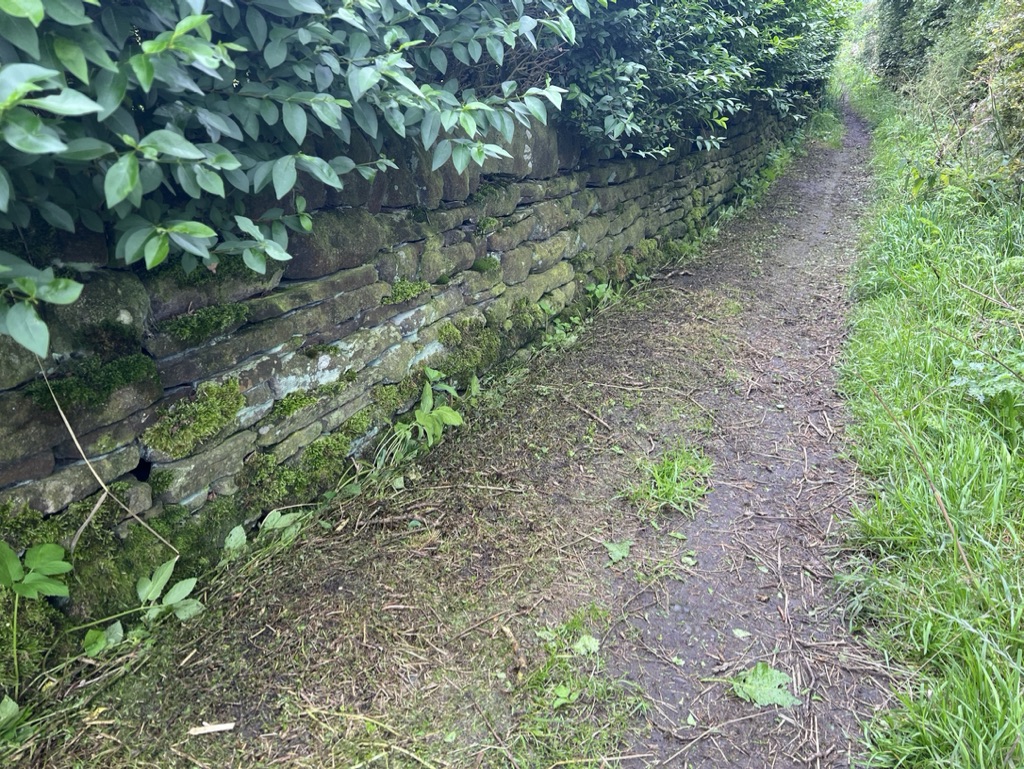
I have a really positive update to share, that the main area I’ve been digging out is now looking significantly clearer of ground elder. I’ve dug it out twice, with one or two more rounds of digging to do before winter. I think I will have reclaimed 1-2m of the planting area for next year, which is a big win! The challenge is around the boundary where we have a hedge and small stone wall (the outside of which is shown above). Here the ground elder is growing through the roots and under the wall, and out the other side. I was going to leave this but its spreading along the wall to almost 7 – 8m long, so I have begun mowing the ground elder on this side to weaken it. I have mowed it twice and will begin scattering seeds of grasses here to try and weaken it and reclaim that area for grass.













